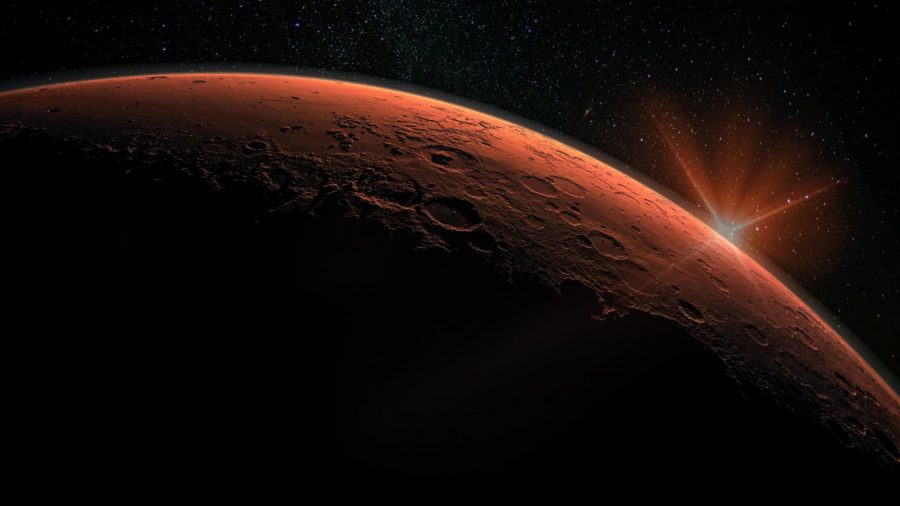Humans on Mars by 2030s?!
The Landing of the Perseverance Rover and the Future of Mars Exploration
Whether it’s movies like Martian or The Space Between Us, or the covers of The Martian Chronicles and The War of the Words sitting on our book shelves, humans have romanticised and feared the inhabitants of Mars and our own arrival on the Red Planet. National Geographic says,”In the 1960s, humans set out to discover what the red planet has to teach us. Now, NASA is hoping to land the first humans on Mars by the 2030s.”
February 18, 2021 marks another completed mission that keeps NASA on track to having humans step foot on Mars by the next decade. The perseverance rover successfully landed on the Red Planet’s rocky terrain last month, being 1 of 5 operational rovers that have touchdown on Mars despite 60% of landing attempts on Mars failing.
Mr. Good excitedly expresses, “I am old enough to remember the many Apollo flights of the 1960s and 70s to the moon. Our family would gather around the TV watching the entire mission from take-off, to splash-down. It was truly nerve-wracking because there were so many things that needed to go right. Perseverance’s mission to Mars brought back those same feelings as a smooth touch-down was never guaranteed! The landing of the Perseverance Rover was absolutely incredible! The amount of planning, testing, and the final mission was monumental and groundbreaking for our times.”
But why are we so set on exploring Mars in particular? Scientists observe that the craters and erosion of Mars’ surface provides evidence of once flowing streams, rivers and even a vast ocean. On other parts of the planet, rain poured on the terrain in rainstorms, causing lakes and rivers to gush harshly enough to carve unto the land. With evidence of ancient water sources, scientists believe Mars was once like Earth, able to sustain life; however, the Red Planet went through drastic change to become the dry and arid place it is today, but how? Why? What happened? That is the question scientists are hoping to answer and uncover a history where Earth-like life roamed another planet.

The perseverance rover has 4 specific goals set by NASA to help answer all the questions we seek answers to.
The first goal is to finally determine whether or not there was ever life on Mars by studying the planet’s environment. By searching inside the terrain and Martian rocks, scientists may be able to uncover preserved signs of biosignatures (chemical compound, isotope, or cellular component) that indicate living conditions that were once able to sustain microbial life. Perseverance is the first rover seeking for clues and signs of past life, as previous Martian rovers only sought out to determine habitable conditions rather than living ones.
Goal number two is to establish the type of climate Mars has had regularly in the past. As it is a focal point in Perservance’s mission, scientists are hoping to discover evidence of temperature and weather tha allowed for habitable conditions for microbial life on the planet.
The third goal piggybacks off the second goal since Perseverance is designed to conclude geological processes that created and gradually modified Mars’ crust and surface over time. They are able to complete this by studying the rock layers to reveal rocks that could have formed in water and that hold the chemical building blocks of life: organics.
Perseverance’s final goal is one that humans have fantasized about for ages: begin preparations for humans to set foot on Mars and what the Red planet has to offer us. The rover is basically showing humans how to use modern technology and natural resources within the Martian environment for exploration essentials like life support and fuel. Not only is the rover a demonstration on how to use what Mars has to offer, but also like a test dummy within the environment to teach humans how to stay protected and safe on this alien territory.
The only way Perseverance is capable of completing it’s goals has to do with the precision and hard work put into every last piece of the rover’s design. Mr. Good, offering a few details of the rover’s construction, says, “It should be noted that ND High School alumna, Kristen Macneal was part of the Jet Propulsion Laboratory team that built and sent Perseverance on its mission. She worked on the powerful X-Ray machine that will dig into Martian surface. After speaking and congratulating her, she added that Perseverance also has a drone helicopter, a drill that will drill into rock and put them in tubes, leaving the tubes behind for the next mission in a few years to retrieve them and bring them back to Earth.”
Although all of Perservance’s goals are the first couple steps towards having human’s touch base on Mars’ scarlett terrain by the 2030s, Claire Park ‘21 raises a significant concern in mentioning, “I’m very happy that Perseverance landed on Mars for even further exploration, but I am neutral about the fact that humans may land on Mars. I’m all for scientific exploration and furthering our knowledge about space and the unknown, but I’m afraid that as we Americans do, we’ll stamp a flag on Mars and “colonize” it or make our claim towards Mars, which I don’t think us particularly correct or right to do.”
If everything goes as planned, and unethical colonization is avoided, our extraterrestrial dreams may not be so out of this world.

